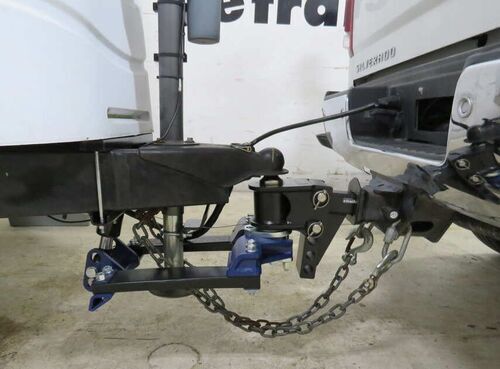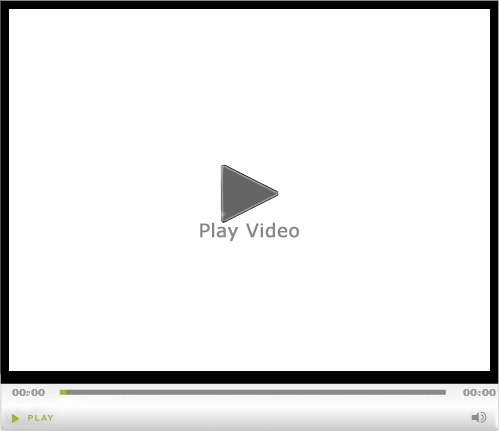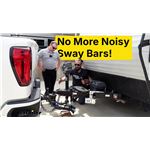B&W Continuum Weight Distribution w/ Sway Control and Extra Drop - 16K GTW, 1.6K TW
- All Info
- Reviews (130)
- Q & A (0)
- Videos (1)
- Photos
B and W Weight Distribution Hitch - BW84BR
- 1000 lbs
- 1100 lbs
- 1200 lbs
- 1300 lbs
- 1400 lbs
- 1500 lbs
- 700 lbs
- 800 lbs
- 900 lbs
- Fits 2 Inch Hitch
- WD With Sway Control
- Allows Backing Up
- B and W
- Includes Shank
- Hydraulic System
- Top-Mount
- Fits 5 Inch Frame
- Fits 6 Inch Frame
The Continuum is so quiet, you might forget its there. This system works with your standard coupler and a 2" hitch, plus its 4" extended pin block adds extra drop for lifted trucks or low trailers.
Highlights
- So Quiet, You'll Forget It's There: Other sway control setups have steel on steel that creaks, screeches, and pops, but this one is super quiet - you'll forget it's even there.
- Adjusts on the Fly: If you're ride feels a little stiff or if you feel like you don't have enough control, just pull over and adjust the psi setting.
- Extra Drop: This hitch head has an extended drop to ensure a level, stable tow for your lifted truck or low-riding trailer.
- Easy Hookup & Unloading: The driver-side operation and twist-release valve make it simple to hitch up, distribute weight, and disconnect when you're done.
- Improves Handling for a Comfortable Ride: The hitch head and bars work together to shift weight to your tow vehicle's front axle, improving steering and braking so you feel more in control.
Features to know about
A New Way to Solve Sway
When your tongue weight is perfectly balanced, you can achieve sway control without the need for additional sway bars or noisy, friction-inducing brackets. The Continuum allows you to do just that. The single-piece load bar assembly on this system is designed to transfer weight off of the coupling point and evenly disperse it over the axles of your truck and trailer instead.
Other weight distribution systems require a ton of manual adjustment to get the weight balanced. You might have to switch out chain links or play around with the height of frame brackets to get the right tension on the spring bars. The tilt of the system head might need to be adjusted too to get the load distributed. But even with those adjustments, it can be almost impossible to fine-tune the system enough to get your tongue weight perfectly balanced.

The Continuum replaces manual adjustments with hydraulic pressure, making weight distribution effortless. Just pump the handle on the drivers side - no need to walk around snapping up spring bars. Plus, you can fine-tune tension quickly for a perfectly balanced ride.
Deep-Drop Shank
If you're towing with a lifted truck or a low-riding trailer, getting everything level can be a challenge - but that's where this setup shines. With a deep-drop shank, you get the extra drop needed to bring your trailer and tow vehicle into proper alignment. A level connection isn't just about looks - it's essential for even weight distribution, improved steering, and safer braking. Without enough drop, your trailer's nose could tilt up, causing handling issues, increased sway, and uneven tire wear. This design ensures a stable, controlled tow, so you can hit the road with confidence, knowing your setup is properly balanced for a smoother ride.
Faster, Safer, Easier Setup
When you first install the Continuum, it might take a bit of time to get the load bar assembly, hydraulic cylinder, and hydraulic pump mounted on your trailer. But once everything is in place, setting up the system each time you tow is a snap.

The hitch head - which mounts in your vehicle's receiver and provides the attachment point for the Continuum - features a preset angle, so the only adjustment you might need to make is to move the head up or down along the shank. Unlike other weight distribution systems, you won't need to change out any hard-to-reach washers or readjust the tension on spring bars to get set up. The head also has friction sway control built in to help hold your trailer in line at the coupling point.

Instead of rigid steel spring bars that have to be manually snapped into place, the Continuum has a composite load bar assembly that raises with a pump of a handle. This assembly uses a flexible composite material called LiteFlex, which is strong enough to handle heavy loads, yet flexible enough to ensure that you won't have a rough, rigid ride at lower tongue weights. Because of this, the Continuum can handle anything from a small enclosed trailer to a large camper, allowing the system to grow with you.

Once you get your trailer hooked up and you're ready to transfer your load, just pump the handle on the hydraulic unit. This will raise the rear of the load bar assembly to distribute your tongue weight.

The knob on the side of the hydraulic unit allows you to back off some of the pressure you pump in so you can dial in just the right amount to get your towing setup balanced. Take note of the psi reading on the built-in pressure gauge once you're done and record it in the included log for the next time you tow.
If you start to experience a bumpy ride while towing with the Continuum, it might be a sign that you've moved too much weight off of the connection point. Fixing this is simple: find a place to park and turn the built-in adjustment knob on the pump unit to release some pressure.
Selecting a Weight Distribution System
The tongue weight rating is the most important factor in determining which size weight distribution system you should use. If the bars of the system you choose are rated too high for your setup, they will create a rigid ride, which can result in a bouncing trailer. If, on the other hand, the bars are not rated high enough, the system will be unable to properly distribute the weight, rendering it virtually useless.
To determine the proper weight rating for a weight distribution system, you must first determine your trailer's tongue weight. Then add to that the weight of the cargo behind the rear axle of your tow vehicle. These two measurements make up the tongue weight rating for a weight distribution system.
Specs
Weight Capacities:
- Tongue weight: 600 - 1,600 lbs
- Maximum gross towing weight: 16,000 lbs
Vehicle and Trailer Compatibility:
- Application: fits 2" x 2" trailer hitch receivers rated for use with weight distribution systems
- Trailer frame height: compatible with 5" or 6" trailer frames.
- Shorter (4") or taller (7") will work, but require alternate bolts (not included).
- Tow vehicle compatibility: works with vehicles with or without an auto-leveling system
Hitch Ball and Adjustability:
- Ball size: 2-5/16"
- Maximum drop: 4" (from top of receiver to top of hitch ball)
- Maximum rise: 12-3/8" (from top of receiver to top of hitch ball)
- Total height adjustment along shank: 16-3/8"
- Head adjusts in: 1-3/4" increments
Shank Measurements
- Shank length (hitch pin hole to front of shank): 11-3/8"
- Overall length: 14-5/8"
Load Bar and System Dimensions
- Space between load bars: 6-1/2"
- Weight of load bar assembly: 20 lbs
- Weight of system head: 35 lbs
Warranty
- Limited lifetime warranty
Selecting a Weight Distribution System
The tongue weight rating is the most important factor in determining which size weight distribution system you should use. If the bars of the system you choose are rated too high for your setup, they will create a rigid ride, which can result in a bouncing trailer. If, on the other hand, the bars are not rated high enough, the system will be unable to properly distribute the weight, rendering it virtually useless.
To determine the proper weight rating for a weight distribution system, you must first determine your trailer's tongue weight. Then add to that the weight of the cargo behind the rear axle of your tow vehicle. These two measurements make up the tongue weight rating for a weight distribution system.
WDHL4510 B&W Continuum Weight Distribution Head Assembly with Extra Drop and Load Bars for Standard Coupler - 2" Shank - 2-5/16" Ball - 16K
Installation DetailsCalifornia residents: click here


Videos are provided as a guide only. Refer to manufacturer installation instructions and specs for complete information.
Video Transcript for The Quietest Weight Distribution Hitch Ever? B&W Continuum Interview + Breakdown
Hey, neighbors, Kevin here with etrailer, and today we have our friend Sean from B&W here and they're gonna be telling us a little bit more about the B&W Continuum weight distribution hitch. So Sean, can you tell me a little bit more about how this system works and what makes it stand out compared to others on the market Absolutely, so this is our Continuum weight distribution hitch. We did things a little bit differently than your traditional weight distribution hitch, which you're used to having the torsion bars or the chains, things like that. This is gonna be a hydraulic-driven weight distribution hitch. So instead of using the torsion bars, you've got a hydraulic cylinder with your hydraulic pump. Your customer is gonna have a specific PSI rating for their truck and trailer, whatever that number is, you pump that handle, that needle is gonna rise up with the hydraulic pressure.
Once that needle hits that number, you stop and you can go ahead and take off and begin your journey. Kevin Having this so tight and compact here, it just really makes a huge difference. Absolutely, yeah. So it pretty much takes the need of having to jack your trailer up using a tool to get those bars over and connected. All of those pain points from a traditional weight distribution hitch that we put a lot of thought into how to rid of those and still be able to either meet or exceed your weight distribution and your sway capabilities as a traditional weight distribution hitch.
The less room you need is basically two inches right here. So you need two inches from the back of the coupler plate to the front of the propane bracket. That's really the only measurement that you're gonna need for this hitch. The pump bracket there, it can be moved up and down. If you've got a brake controller or you've got a battery disconnect, like we have over there, you can kind of measure that and put it wherever you need to put it.
There's not an exact measurement there, so it's kind of up to the end user, and then we provide plenty of hose there to be able to move or maneuver that wherever you need to. So another issue a lot of weight distribution hitch owners have is that once they get to their campsite, they can't just pull right in, they gotta get out, undo the spring bars, and then they can finally back up into the camping spot. Now, you've told us before that this is able to back up. You know, how is that possible with the system Absolutely, yes, so you can back into your campsite without needing to depressurize or remove any components of our Continuum weight distribution hitch. So the reason is, is there's really nothing attached to the frame.
There's no tension actually on the frame of the trailer itself. The bars can stay loaded, you can back in, and then release 'em, decouple and take off. That's really all you need to do. So one of the other main concerns aside from just distributing that or distributing that weight is sway control. So how does this manage that sway and keep our trailer in line So traditionally, the verbiage when you talk about a weight distribution sway control hitch has been the term sway control. Sway control pretty much implies that you are controlling it after it starts. So a traditional weight distribution hitch, your trailer's gonna start to sway, you're gonna release one side, you're gonna load another. So it's gonna try to correct it after it starts. What we like is sway prevention. So this is a more of a sway prevention hitch than it is a sway control hitch. And the reason is that the bars here on the Continuum, they stay loaded continually through the whole tow, hence the name Continuum. So you've got a solid connection between the hitch, the truck, the trailer throughout the entire tow. So there's nothing to release, nothing to put a load on. You're staying continually loaded through the whole tow. Now, we have a lot of people that typically come in for both a weight distribution hitch and then some other kind of aftermarket rear suspension enhancement. Now, typically that's gonna be air springs and I actually do a lot of air spring installs myself. I even have one right after this, I have to go hop on. What is your opinion on air springs when it comes to using the Continuum Yeah, so the Continuum weight distribution hitch eliminates the need to use airbags. So airbags are not gonna be necessary to run the Continuum. When you pressurize that load bar, it's gonna bring the truck up to where it needs to be. If you run an airbag system alongside the Continuum weight distribution hitch, they fight against each other. So you're not gonna get the effective amount of weight distribution as weight control as you would with airbags. We recommend deflating the airbags to the minimum amount that the manufacturer of that airbag recommends and then just rolling with that. So now that we are hooked up, how exactly do we find the right pressure You know, how does this whole pump system work with this So each truck and trailer is gonna be different depending on the tongue weights of the trailer and the suspension of the truck. So if you're sagging like this, you're obviously gonna wanna bring that up to get your weight distributed properly. There's a couple of ways to determine how to get that number. One way is, is if you know what your VTW is, your vertical tongue weight is while you're loaded, you can take that times 1.2, and that will tell you what your PSI reading is. A lot of times that requires going to a scale, getting a really accurate reading. The other way you can do it is the old school way. Pull your truck on flat level ground, measure from the ground to the bottom of the front driver wheel well, then couple your trailer on it, it's gonna change that measurement. You'll take that second measurement and you'll pump that handle until you get halfway in between those two numbers. And whatever that needle says at that point, that's exactly what you're gonna use every single time. Now what happens if we go a little bit over that Is that gonna be a problem So is there any kind of 1 to 200 PSI either above or below is completely normal. That's gonna be okay. You do wanna stay right around that PSI number. For this truck and trailer, we're at 700 PSI. So I know that when we go to leave, I'm gonna pump this up until that needle says 700. When I stop and get gas, I'm gonna just give it an eye to see if we're still in. If I need to release a little bit or add a little bit, I can do that on the fly. So I need to be at 700 PSI. So I will go ahead and start pumping this up. The load bar's gonna come up. Kevin And you're easily doing that with one hand. Sean Two fingers. Two fingers, you can do it with two fingers if you want. All right. Kevin Set up in a matter of seconds. Sean That's it. Now, my weight distributed off of the rear axle, 50% of it back onto the front axle. So now, we are technically like this and not like this or not like that. So this does look like a fun toy for those that have kids. I know mine especially would be over here cranking away on it. What is the protection for this if we just go crazy over. Okay. Like what if we start pumping and you know we're hitting way past that 100 or 200 wiggle room Sure, sure, very easy. So I actually put it up to about 900 right now, which 700 is where I need to be. So if I need to back it off a little bit, you can just release that needle valve and start over. So as time goes on, a lot of people are swapping out their trailers usually within three to five years. What if I'm upgrading or downgrading Do I need to buy any other components Do I need to swap anything out with this hitch so I can switch over to that other trailer No, sir, that's another nice thing about the Continuum weight distribution hitch. The head unit here is rated for 16,000. The load bar is rated for 600 to 1600 vertical tongue weight. So that pretty much covers all travel trailers that you can purchase. You're gonna have a hard time finding one that exceeds that. So yeah, you would just take the hitch off of this off your trailer and move it onto your new one. So since this does live outside for the majority of the time here, since that'll just rack right up onto that bracket that's mounted to the trailer jack, are there any maintenance steps that we should be following so that we make sure that our system's properly running each time So we put a lot of thought into the maintenance side of this hitch to make it easier for the end user. The hydraulic system here is all self-contained. There's no maintenance that you have to do, there's no fill valve, you don't have to add hydraulic fluid. It is all self-contained. Now, on the head unit itself, the load bar will snap onto this little spindle right here. That spindle rotates 360 degrees. It's a dual manifold up in here. So you'll turn it this way, hit the top one, turn it that way, hit the bottom one, and we recommend to do that every five to 600 miles. So now, we've gone through our system here in a much more detailed fashion, could you just give a quick summary of why a neighbor would want this specifically for their trailer Absolutely, so the first and foremost thing is the ease of use. It is super easy to use no matter what your capabilities are. I've seen a 6-year-old kid pump this up and get it ready to go, so it virtually can be used by anyone. The nice thing about the head unit is, is you don't have to worry about bolts or washers or nuts. The head unit works just like our Tow & Stow does, where you just pull the pins, you can run it up and down depending on how high you need your trailer coupler to be. The Continuum does not have any wear points or any friction points. So it's virtually silent when you tow. It's really no different than hooking up to an enclosed trailer with a regular ball mount and towing it down the road. But just the ease of use, that is the number one thing that people like about this hitch. You can literally, after you load, you can be coupled up, pressurized, and leaving your campsite in under three minutes, and that's huge. Really makes a difference. Absolutely. So with all that said, I really hope this makes a difference for you at home as well and helps you decide which hitch is gonna be the right fit for your setup.
Ratings & Reviews
4.7
130 reviews
See what our Experts say about this B and W Weight Distribution Hitch
- Can B&W Continuum Weight Distribution Be Used With Tuson Electronic Sway Control?Hey Dan, thanks for reaching out. Yes, the B&W Continuum Weight Distribution # BW84BR can absolutely be used with the Tuson Trailer Sway Control System # 335TSC-1000. The two will not interfere with each other in any way. Are you having really bad sway with your camper? Just curious why you think you need both systems? Not something we hear commonly so just wondering what kind of setup you are running with and what is going on.
view full answer...
Info for this part was:




At etrailer.com we provide the best information available about the products we sell. We take the quality of our information seriously so that you can get the right part the first time. Let us know if anything is missing or if you have any questions.










































Thank you! Your comment has been submitted successfully. You should be able to view your question/comment here within a few days.
Error submitting comment. Please try again momentarily.